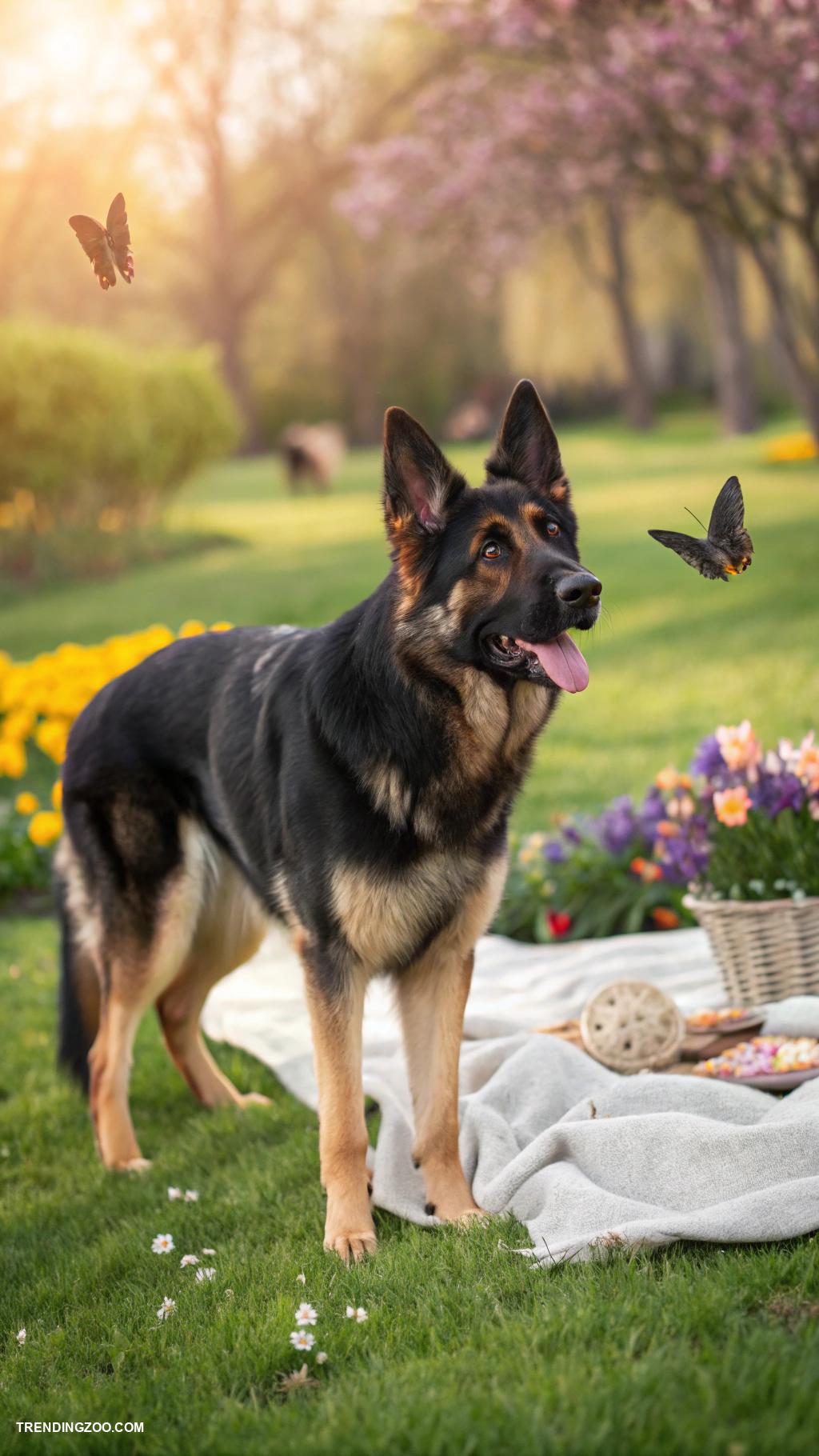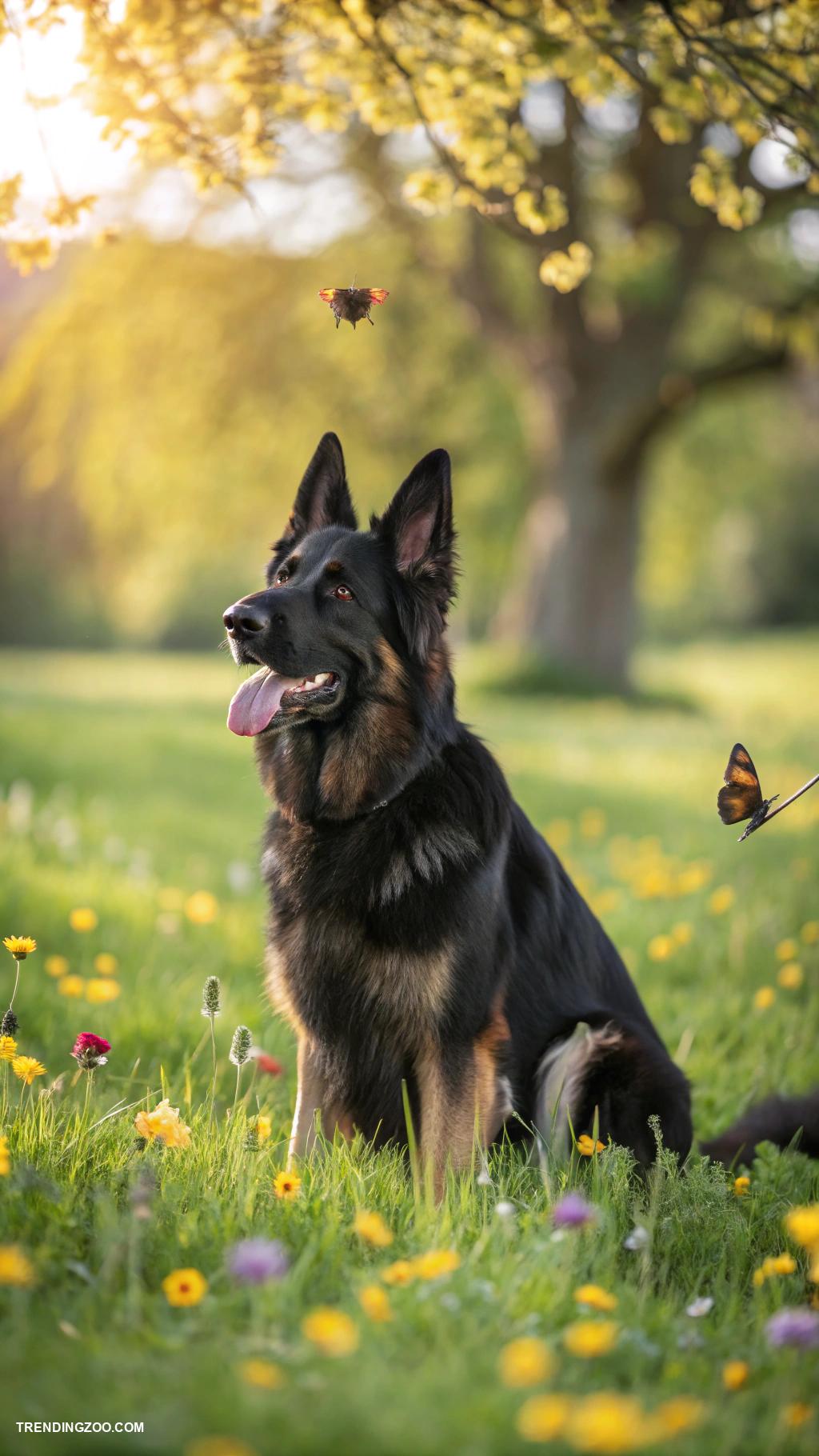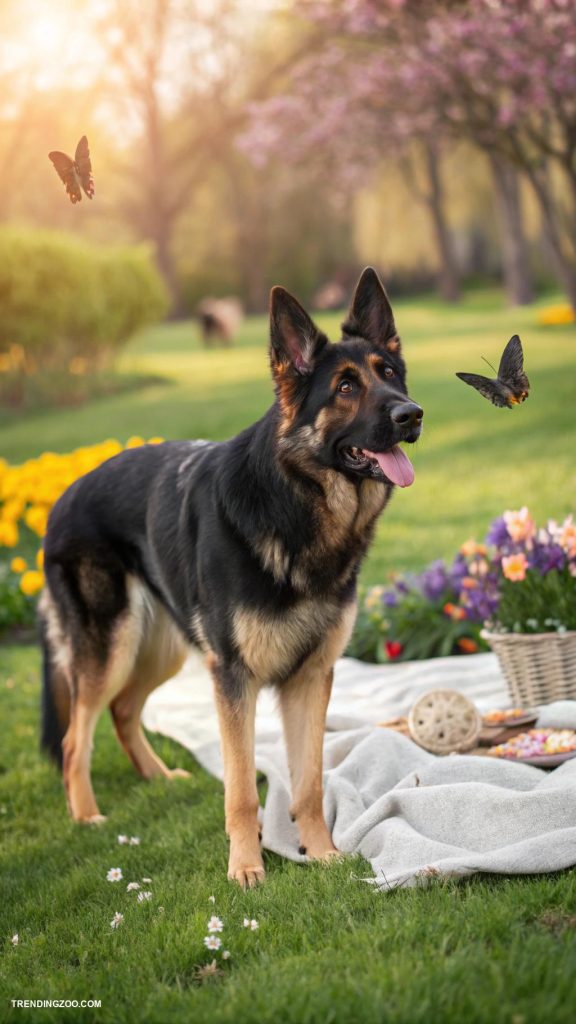German Shepherds are one of the most iconic and beloved breeds in the world, known for their intelligence, loyalty, and striking appearance. With their piercing gaze and athletic build, it’s no wonder why they’re often the go-to breed for search and rescue missions, police work, and even as beloved family pets.
But beyond their impressive credentials, German Shepherds are also a breed that thrives on human interaction and attention, making them a perfect fit for active families or someone looking for a lifelong companion. In this article, we’ll delve into the world of German Shepherds, exploring their origins, characteristics, and what makes them such an exceptional breed.

History and Origin of the German Shepherd
The German Shepherd breed has a rich and storied history that dates back to the late 1800s in Germany. The breed was developed by Captain Max von Stephanitz, a German cavalry officer, who was impressed by the intelligence, strength, and agility of herding dogs he saw working on the streets and farms of Germany.
Stephanitz was determined to create a breed that could excel in herding, guarding, and serving as a police dog. He founded the Verein für Deutsche Schäferhunde, or Society for the German Shepherd Dog, in 1899, and set out to breed dogs that possessed the desired characteristics. Stephanitz’s efforts were successful, and the breed quickly gained popularity in Germany and eventually around the world.
The German Shepherd was officially recognized as a distinct breed by the American Kennel Club (AKC) in 1912, and has since become one of the most popular breeds in the world, known for its loyalty, intelligence, and protective nature.
Physical Characteristics and Appearance
German Shepherds are a breed of domesticated dog known for their striking physical characteristics and appearance. They have a medium to large build, with males typically weighing between 85-110 pounds and standing between 24-26 inches tall at the shoulder, while females weigh between 75-95 pounds and stand between 22-24 inches tall.
Their coats are medium-length and double-layered, consisting of a thick undercoat and a durable outer coat that sheds heavily. The outer coat can vary in color, with the most common being black and tan, although it can also appear in other colors such as black, white, and sable.
German Shepherds have a distinctive head shape, with a slightly sloping forehead, a black nose, and erect ears. Their eyes are dark brown and almond-shaped, with a keen and intelligent expression. Their tails are typically docked, but some breeders and owners choose to leave them natural.
They are a visually striking breed with a powerful and athletic build, making them a popular choice as both family pets and working dogs.
Temperament and Behavior Traits
German Shepherds are renowned for their intelligence, loyalty, and protective nature, which are deeply rooted in their temperament and behavior traits. As a breed, they are naturally inclined to be alert, responsive, and eager to please, making them highly trainable. Their strong work ethic and high energy levels often lead them to excel in various dog sports and activities, such as agility, obedience, and herding.
However, their intense focus and drive can also manifest as anxiety or stress if not properly channelled. German Shepherds are also known for their strong sense of loyalty and pack mentality, which can sometimes lead to over-protectiveness or possessiveness if not socialized and trained correctly.
Generally, they are excellent family pets, especially for active families who can provide them with the physical and mental stimulation they crave. With proper training, socialization, and exercise, German Shepherds can thrive as loving and loyal companions, making them an excellent addition to many households.
Training and Socialization Tips
Training and socialization are crucial components of raising a well-behaved and well-adjusted German Shepherd. From an early age, it’s essential to establish a strong bond with your puppy, focusing on positive reinforcement techniques and consistent boundaries.
Housebreaking can be a challenge, but establishing a routine and rewarding good behavior can make the process smoother. As your puppy grows, socialization is key to helping them develop good manners and a calm demeanor in public. Take them on regular outings to new environments, introduce them to various people, sights, and sounds, and encourage them to interact with other dogs. This will help them build confidence and reduce anxiety.

German Shepherds are naturally intelligent and eager to please, making them highly responsive to training. However, they can be strong-willed and independent, so it’s vital to establish a clear hierarchy and set clear boundaries. With patience, consistency, and positive reinforcement, your German Shepherd can become a loyal and loving companion.
Health Considerations and Common Issues
German Shepherds are a popular breed known for their intelligence, loyalty, and protective nature, but like all breeds, they are not without their health considerations and common issues. One of the most significant concerns is hip dysplasia, a genetic condition that affects the hip joint and can lead to arthritis, pain, and mobility issues.
Responsible breeding practices, such as genetic testing and selective breeding, have helped to reduce the incidence of hip dysplasia in the breed, but it still remains a common issue. Another common health concern is elbow dysplasia, which is similar to hip dysplasia but affects the elbow joint.
German Shepherds are also prone to digestive issues, such as gastrointestinal upset and inflammatory bowel disease, which can be managed with dietary changes and medication. Additionally, the breed is susceptible to certain skin conditions, including hot spots and skin allergies, which can be treated with topical medications and lifestyle changes.
German Shepherds are also at risk for certain eye problems, including cataracts, progressive retinal atrophy, and conjunctivitis, which can be managed with regular eye exams and treatment.
Regular exercise, a balanced diet, and regular veterinary check-ups are essential for maintaining the health and well-being of a German Shepherd.
Royal Canin German Shepherd Adult Dry Dog Food, 30 lb bag
(as of June 22, 2025 18:30 GMT -04:00 - More infoProduct prices and availability are accurate as of the date/time indicated and are subject to change. Any price and availability information displayed on Amazon at the time of purchase will apply to the purchase of this product.)Grooming and Care Requirements
German Shepherds are known for their striking appearance and loyal nature, but they also require regular grooming and care to maintain their health and well-being.
As a high-maintenance breed, German Shepherds need to be brushed several times a week to prevent matting and tangling of their double coat. This coat can be prone to shedding, especially during seasonal changes, so regular brushing is essential to remove loose hair and prevent skin irritation.
In addition to brushing, German Shepherds require regular nail trimming, ear cleaning, and dental care to prevent common health issues. They also need regular baths, but be careful not to over-bathe, as this can strip their coat of its natural oils. It’s also important to check their eyes daily for any signs of redness or discharge, and to trim their nails every four to six weeks to prevent overgrowth.
With regular grooming and care, German Shepherds can thrive and provide their owners with years of companionship and loyalty.
Compatibility with Families and Other Pets
When it comes to compatibility with families and other pets, German Shepherds are often considered to be excellent companions. They are naturally protective of their family and can form strong bonds with children, making them a great addition to active families. In fact, they are often used as therapy dogs, search and rescue dogs, and service dogs due to their intelligence, loyalty, and ability to form close relationships.
However, it’s essential to socialize them well from an early age to ensure they interact well with children and other pets. With proper training and socialization, German Shepherds can get along famously with other dogs, even those of different breeds and sizes. They are also known to get along well with cats, especially if they are introduced to them at a young age.
Of course, as with any breed, it’s crucial to supervise interactions between pets and ensure that they all have their own space and time to relax. With the right training, socialization, and care, a German Shepherd can thrive as a cherished family member, bringing joy, companionship, and love to all.







